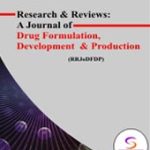
Mane Snehal S,

Ubale Amol T,

Mane Yogita L,

Jadhav Shewata R,

Pawar Neha V,

Shinde Asha S,

Jasmine H. Bagwan,

Monika Y. Waydande,
- Lecturer Mahalaxmi Institute of Pharmacy, Satara Maharastra India
- Principal Mahalaxmi Institute of Pharmacy, Satara Maharastra India
- Lecturer Mahalaxmi Institute of Pharmacy, Satara Maharastra India
- Lecturer Mahalaxmi Institute of Pharmacy, Satara Maharastra India
- Lecturer Mahalaxmi Institute of Pharmacy, Satara Maharastra India
- Lecturer Mahalaxmi Institute of Pharmacy, Satara Maharastra India
- Lecturer Late Narayandas Bhawandas Chhabada Training College Engineering Maharastra India
- Lecturer Late Narayandas Bhawandas Chhabada Training College of Nursing Maharastra India
Abstract
A person’s skin is a crucial indicator of their overall health. Everyone experiences skin issues from time to time in their lives. Wrinkles, acne, pimples, dark spots, hypersensitivity, and atopic dermatitis are some of the ways they might manifest. The aim of this project was to formulate the herbal cream for the purpose of the moisturising, cooling, cure inflammation, itching, skin eruptions, persistent boils, wound healing, antimicrobial, and treatment of various diseases of the skin. In this project work atempt has been made to formulate herbal skin cream using murraya koenigi (curry leaves) powder. Curry leaves are a plant that has a wide range of traditional medical use. it is having vitamin A, vitamin B, vitamin C, vitamin B2, calcium and it is rich in many minerals such as Iron, zinc, copper. M. koenigii has many applications in traditional medicine and has been used widely in Indian food for millennia. The herb is supposed to have tonic and stomachic properties. Bark and roots serve as stimulants and can be administered topically to cure animal bites and breakouts. Green leafy vegetables, when raw, are used to cure vomiting, diarrhea, and dysentery. Furthermore, historically, leaves and roots have been used as analgesics, bitters, anthelmintics, and to cure leucoderma, blood disorders, inflammation, and itching. Many thorough scientific studies are currently being conducted to see whether the whole plant or particular parts of it may be used in different extract forms to treat different types of illnesses. Numerous active components possessing medicinal properties have been recognized and explained. This plant is supposed to have cholesterol-lowering, anti-oxidative, cytotoxic, antimicrobial, and antibacterial qualities.
Keywords: Murraya koenigii, Wound healing, Treat burning, AND CURE boils, Eruptions, Antimicrobial, Skin cream.
[This article belongs to Research & Reviews: A Journal of Drug Formulation, Development and Production(rrjodfdp)]
Browse Figures
References
1.Mhaskar KS, Blatter E, Caius JF. Kirtikar and Basu’s Illustrated Indian Medicinal Plants XI. 3rd Edn. IndianMedical Science Series 86–96. Delhi, India, 2000, I.
2.Prajapati ND, Purohit SS, Sharma AK, Kumar TA. Book of Medicinal plants,1st ed. India: Agrobios India, 2003.
3.Muthumani P, Venkatraman S, Ramseshu KV, Meera R, DeviP, Kameswari B et al. Pharmacological studies of anticancer, anti-inflammatory activities of Murraya koeniggi (Linn) Spreng in experimental animals. J PharmSci& Res. 2009; 1(3):137–141.
4.Giday M, Asfaw Z, Wouldu Z, TeklehaymanotT. Medicinal pant knowledge of the Bench ethnic group of Ethiopia: an ethnobotanical investigation. Journal of Ethnobiology and Ethnomedicine. 2009; 5PP:1–10.
5.Ningappa MB, Srinivas L. Purification and characterization of∼ 35 kDa antioxidant protein from curry leaves (Murraya koenigii L.). Toxicology in vitro. 2008 Apr 1;22(3):699–709.
6.Bhattacharjee SK. Hand Book of Medicinal Plant. 3rd,pointer publishers, Jaipur, 2001, 230.
7.Ogston A. On Abscesses. Classics in Infectious Diseases. Rev Infect Dis. 1984; 6(1):122–128.
8.Hanci SY. Classics of infectious diseases: a bibliometric analysis of the 100 most cited articles. Medicine. 2023 Apr 28;102(17):e33607.
9.Makarova K, Slesarev A, Wolf Y, Sorokin A, Mirkin B, Koonin E, Pavlov A, Pavlova N, Karamychev V, Polouchine N, Shakhova V. Comparative genomics of the lactic acid bacteria. Proceedings of the National Academy of Sciences. 2006 Oct 17;103(42):15611–6.
10.Sanders Jr WE, Sanders CC. Enterobacter spp.: pathogens poised to flourish at the turn of the century. Clinical microbiology reviews. 1997 Apr;10(2):220–41.
11.Spices and Condiments, J.S. Pruthi, 2018, 9th Edition, National Book Trust, India. Accessed March 30, 2024. https://www.nbtindia.gov.in/books_detail__8__india-the-land-and-the-people__177__spices-and-condiments.nbt
12.Mhaskar KS, Blatter E, Caius JF. In Kirtikarand Basu’s Illustrated Indian Medicinal Plants Their Usage in Ayurveda and Unani Medicine, Shri Satguru Publication, Delhi. 2000; 3:656–659.
13.Parmar C, Kaushal MK. Wild fruits of the Sub-Himalayan region. Wild fruits of the Sub-Himalayan region. 1982., New Delhi, 1982, 45–48
14.Lawal H, Atiku MK, Khelpai DG, Wannang NN. Hypoglycaemic and hypolipidaemic effects of the aqueous leaf extract of Murraya koenigii in normal and alloxan–diabetic rats. Nigerian Journal of Physiological Sciences. 2008;23(1–2).
15.Thirumurugan K, Shihabudeen MS, Hansi PD. Antimicrobial activity and phytochemical analysis of selected Indian folk medicinal plants. steroids. 2010;1(7):430–34.
| Volume | 11 |
| Issue | 01 |
| Received | March 6, 2024 |
| Accepted | March 30, 2024 |
| Published | April 12, 2024 |


